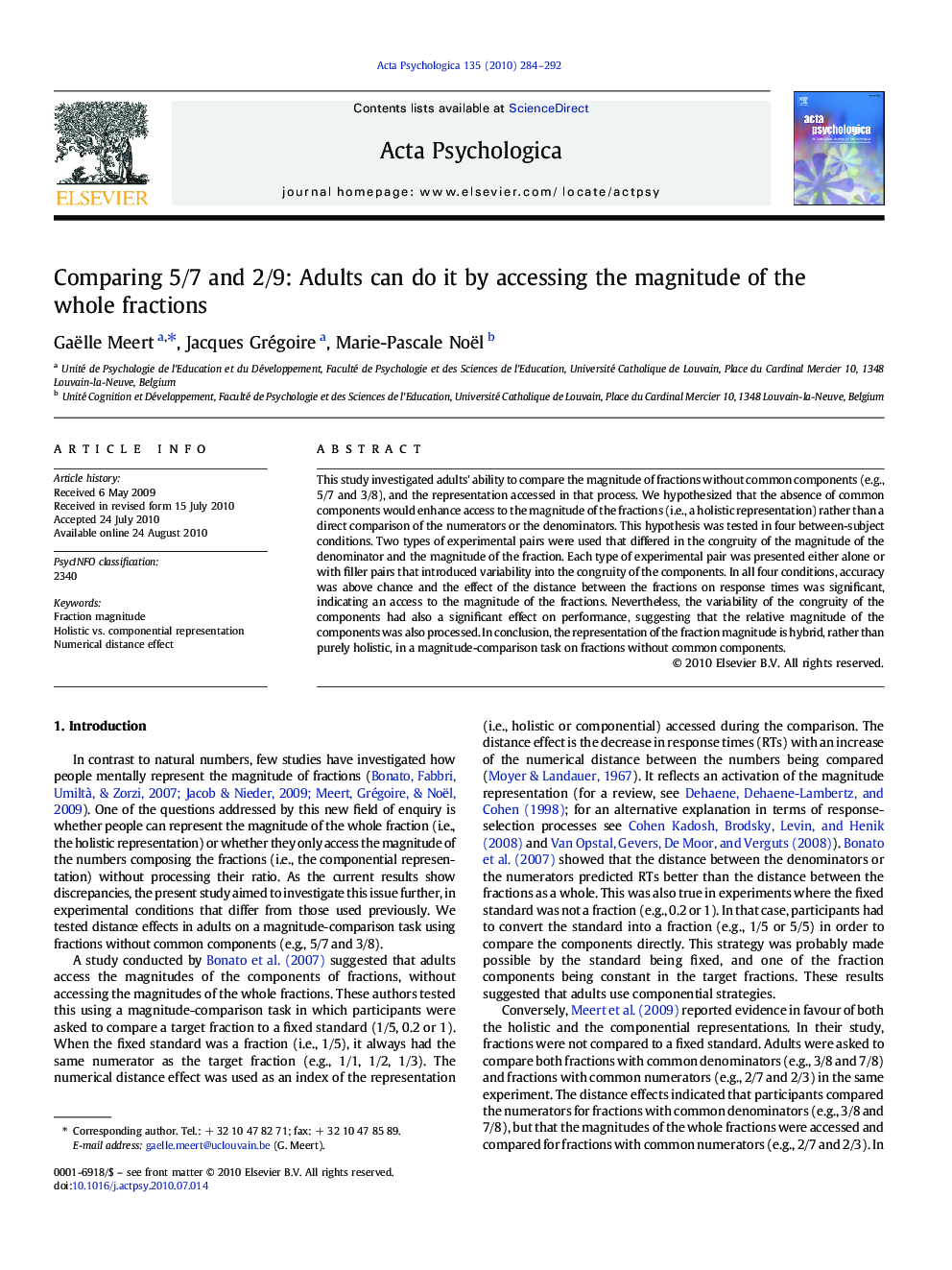| Article ID | Journal | Published Year | Pages | File Type |
|---|---|---|---|---|
| 10453873 | Acta Psychologica | 2010 | 9 Pages |
Abstract
This study investigated adults' ability to compare the magnitude of fractions without common components (e.g., 5/7 and 3/8), and the representation accessed in that process. We hypothesized that the absence of common components would enhance access to the magnitude of the fractions (i.e., a holistic representation) rather than a direct comparison of the numerators or the denominators. This hypothesis was tested in four between-subject conditions. Two types of experimental pairs were used that differed in the congruity of the magnitude of the denominator and the magnitude of the fraction. Each type of experimental pair was presented either alone or with filler pairs that introduced variability into the congruity of the components. In all four conditions, accuracy was above chance and the effect of the distance between the fractions on response times was significant, indicating an access to the magnitude of the fractions. Nevertheless, the variability of the congruity of the components had also a significant effect on performance, suggesting that the relative magnitude of the components was also processed. In conclusion, the representation of the fraction magnitude is hybrid, rather than purely holistic, in a magnitude-comparison task on fractions without common components.
Keywords
Related Topics
Life Sciences
Neuroscience
Cognitive Neuroscience
Authors
Gaëlle Meert, Jacques Grégoire, Marie-Pascale Noël,
